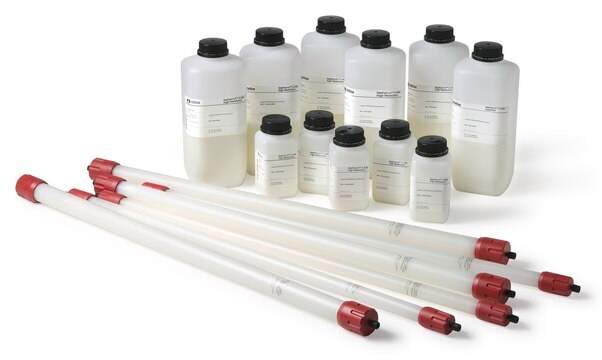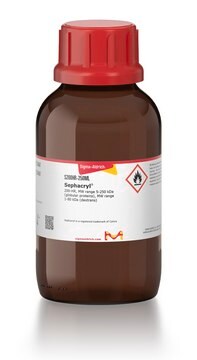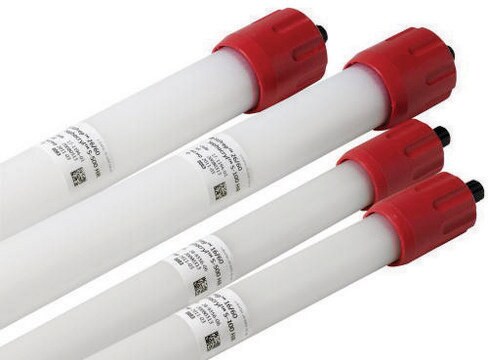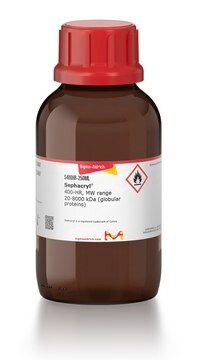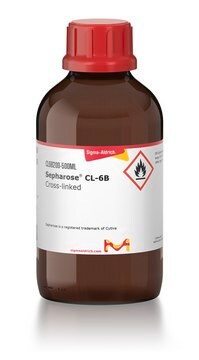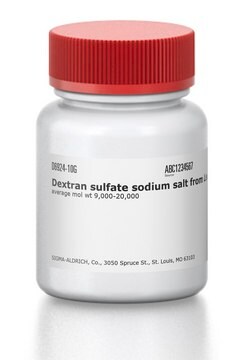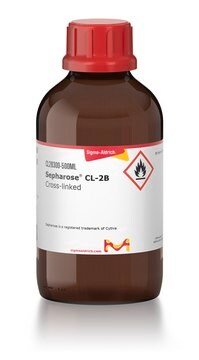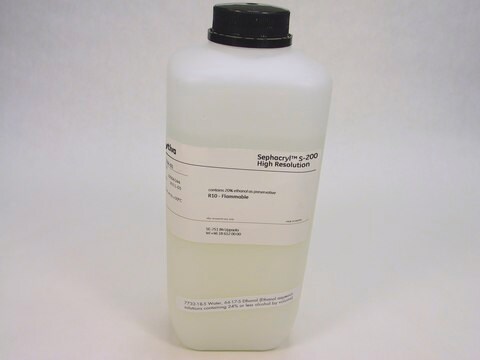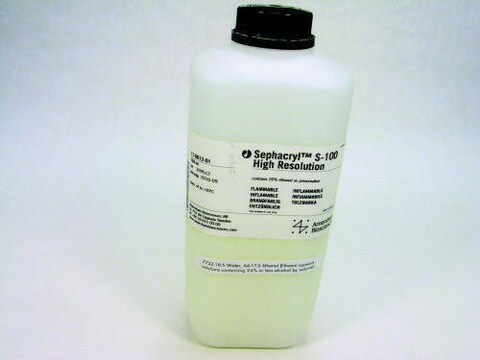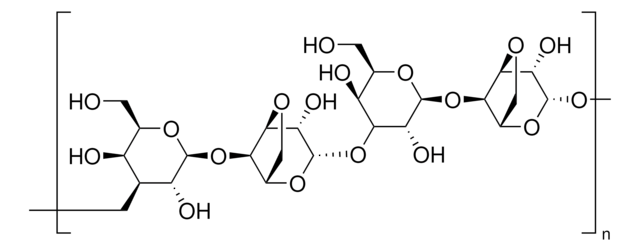S500HR
Sephacryl® Size Exclusion Resin
500-HR, MW range 40-20,000 kDa (dextrans)
Synonim(y):
Poly([allyl dextran]-co-N,N′-methylenebisacrylamide)
About This Item
Polecane produkty
Nazwa produktu
Sephacryl®, 500-HR, MW range 40-20,000 kDa (dextrans)
opis
stability: stable to 0.2M NaOH
Formularz
suspension (20% aqueous ethanol)
Właściwości
autoclavable
Matryca
crosslinked allyl dextran/N,N′-methylenebisacrylamide copolymer
wielkość cząstki
25-75 μm (wet)
wielkość porów
40-20,000 kDa MW range (dextrans)
kompatybilność
mode of use size exclusion chromatography
temp. przechowywania
2-8°C
Szukasz podobnych produktów? Odwiedź Przewodnik dotyczący porównywania produktów
Opis ogólny
- Supplied swollen, suspended in 20% aqueous ethanol
- Autoclavable
- Stable to 0.2N sodium hydroxide (NaOH)
- Store at refrigerated temperature (2-8 °C)
Zastosowanie
Informacje prawne
Hasło ostrzegawcze
Warning
Zwroty wskazujące rodzaj zagrożenia
Zwroty wskazujące środki ostrożności
Klasyfikacja zagrożeń
Flam. Liq. 3
Kod klasy składowania
3 - Flammable liquids
Klasa zagrożenia wodnego (WGK)
WGK 1
Temperatura zapłonu (°F)
100.4 - 109.4 °F - closed cup
Temperatura zapłonu (°C)
38 - 43 °C - closed cup
Środki ochrony indywidualnej
Eyeshields, Faceshields, Gloves, type ABEK (EN14387) respirator filter
Wybierz jedną z najnowszych wersji:
Masz już ten produkt?
Dokumenty związane z niedawno zakupionymi produktami zostały zamieszczone w Bibliotece dokumentów.
Klienci oglądali również te produkty
Nasz zespół naukowców ma doświadczenie we wszystkich obszarach badań, w tym w naukach przyrodniczych, materiałoznawstwie, syntezie chemicznej, chromatografii, analityce i wielu innych dziedzinach.
Skontaktuj się z zespołem ds. pomocy technicznej